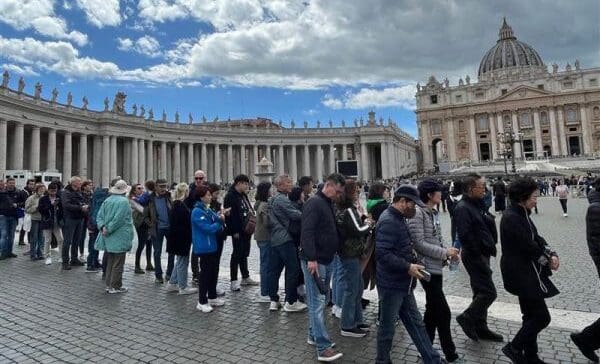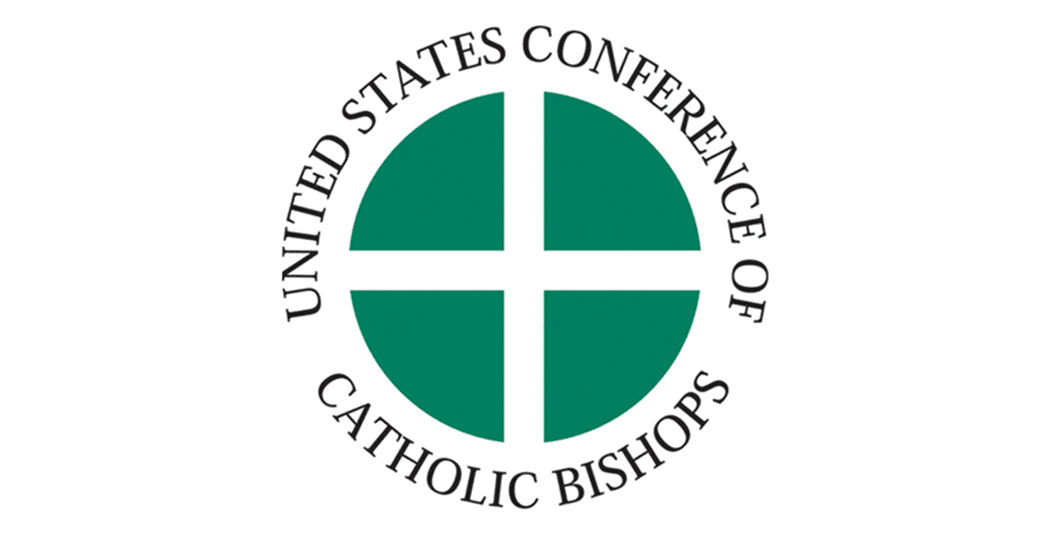This summer, the new Divine Office Hymnal will be available in print: our first glance at the new translation of hymn texts for praying the Divine Office. This liturgical book of music represents the fruit of a decade’s worth of work for the new translation of the Liturgy of the Hours, fittingly highlighting the song of praise of the Liturgy of the Hours, the eternal song of Christ to the Father.
For as the General Instruction of the Liturgy of the Hours (GILH) notes, “When the Church offers praise to God in the Liturgy of the Hours, it unites itself with that hymn of praise which is sung in the heavenly places throughout all ages; it also receives a foretaste of the song of praise in heaven, described by John in the Book of Revelation, the song that is sung without ceasing before the throne of God and of the Lamb” (16).
The Divine Office Hymnal features the English translation of the hymn texts from the Latin typical edition. Each hymn is set to two different melodies: first to chant-melodies of the Gregorian repertoire, and second to metrical melodies. The choice to include both tunes from the Church’s tradition of Gregorian chant alongside metered hymn tunes serves to “encourage both aspects of the Church’s musical patrimony,” said Father Andrew Menke, executive director of the Secretariat for Divine Worship of the U.S. Conference of Catholic Bishops (USCCB). He is optimistic, too, that “we might see a renaissance in praying the Liturgy of the Hours among the faithful,” echoing the call of encouragement from the Second Vatican Council for the laity to take up this daily prayer (see Sacrosanctum Concilium (SC), 100). This hymnal represents a significant contribution to the liturgical life of the Church, both for individuals as well as communities who pray the hours in common, as “the divine office is the voice of the Church, that is of the whole mystical body publicly praising God” (SC, 99). The Liturgy of the Hours “is the public prayer of the Church, is a source of piety, and nourishment for personal prayer” (SC, 90).
The divine office is the voice of the Church, that is of the whole mystical body publicly praising God.
–Sacrosanctum Concilium, 99
Second Edition
At their fall meeting in 2012, the USCCB voted to approve the “scope of work” for the new translation of the Liturgy of the Hours, according to the second typical edition (published by the Holy See in 1985). This scope called for the use of the entirety of the body of approved hymns from the Latin typical edition of the Liturgia Horarum and their translation into English. The work of translation of liturgical texts into English is accomplished by the International Commission on English in the Liturgy (ICEL) which serves the English-speaking episcopal conferences. Through the work of ICEL, the 294 Latin texts of the Office hymns were researched and translated by the efforts of several individuals and the independent work of two women’s religious communities. Executive Director of ICEL, Msgr. Andrew Wadsworth, remarked that this effort represents a “phenomenal recovery of a large portion of liturgical texts that were not previously available in English.”
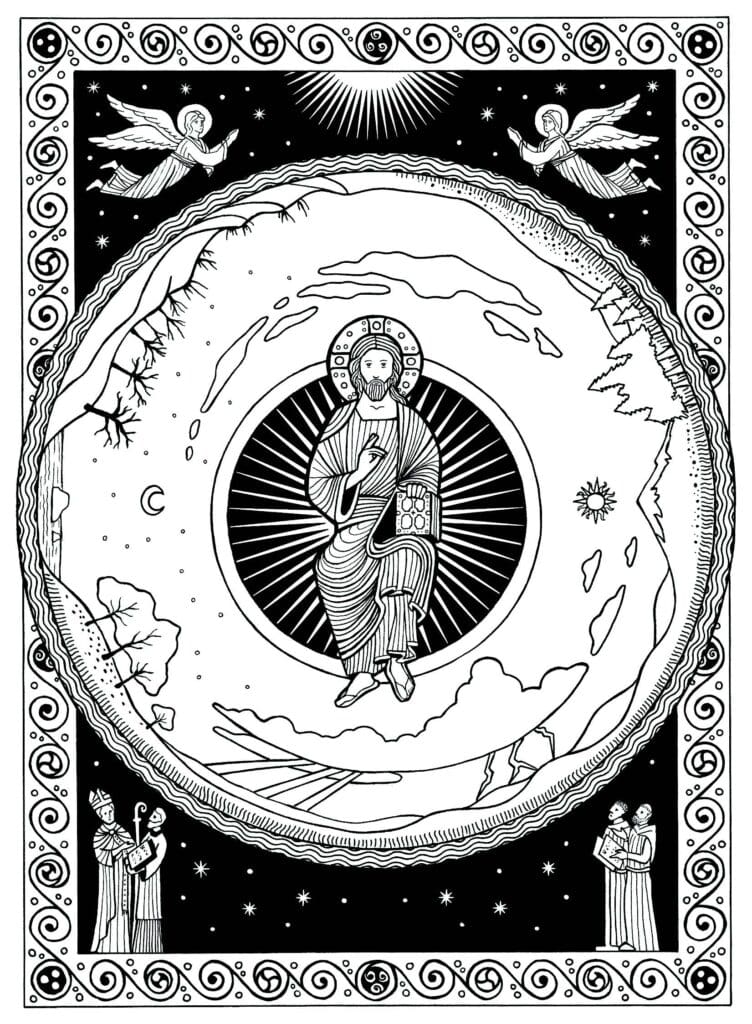
Image Source: AB/United States Conference of Catholic Bishops
In the current edition of the Liturgy of the Hours, the hymns are often presented with multiple options for texts, which many times do not include the rich and ancient hymnody present in the same edition in Latin. Instead, the decision was previously made to include modern hymn texts and other songs, often replacing or omitting these great masterpieces of liturgical poetry. However, in the second edition of the Liturgy of the Hours, these beautiful hymns have been restored to their proper place in the English liturgical books. Many of these hymns have been a part of the Church’s liturgy for centuries, complemented by newer additions for the more recent additions to the feasts on the calendar, as noted in the foreword to the hymnal. The U.S. Bishops voted to approve the translation of the hymn texts at their plenary session in November 2019. The Holy See confirmed this translation in May 2020. With the inclusion of these hymn texts, when the second edition of the Liturgy of the Hours is released, it will be the first time the whole of the proper of the Divine Office is available in English.
These liturgical texts are also made available by ICEL to the other English-speaking episcopal conferences who may take up this project (e.g., England and Wales, Australia). These will be the first updated books for the Divine Office available in the English-speaking world. The U.S. edition of the Divine Office does differ in some ways from the liturgical books of other English-speaking conferences. For instance, scriptural readings will vary from conference to conference. In the dioceses of the United States, the scriptural readings are taken from the New American Bible Revised Edition, and the psalms from The Abbey Psalms and Canticles—the newest Revised Grail Psalms with the approved translation of the Old and New Testament canticles. According to the translation principles of Magnum Principium, each conference may produce its own translation of these liturgical books, but the core of the texts could be common throughout all of the English-speaking editions.
When the second edition of the Liturgy of the Hours is released, it will be the first time the whole of the proper of the Divine Office is available in English.
“Mystical and Poetic Character”
The hymn is a unique element of the Liturgy of the Hours as a non-biblical poetic composition that assists the faithful in entering more deeply into this eternal song of Christ. In these hymns, we hear “the voice of the Church responding to the Word of God” (Foreword). The GILH describes the significance of the hymn: “A very ancient tradition gives hymns the place in the office that they still retain. By their mystical and poetic character they are specifically designed for God’s praise. But they also are an element for the people; in fact, more often than the other parts of the office, the hymns bring out the proper theme of individual hours or feasts and incline and draw the spirit to a devout celebration. The beauty of their language often adds to this power. Furthermore, in the office, hymns are the main poetic element created by the Church” (173).
Notably, the hymn translations use non-rhyming texts, a decision made in order to maintain the metrical pattern as well as the accent patterns of the original Latin texts. The committee recognized that emphasizing rhyme could sacrifice content and meter, and pose a challenge in maintaining the theological integrity of the texts. Another unique aspect to these texts is the elevated linguistic register of this liturgical poetry, fitting the dignity of the ancient melodies, and yet also readable even when not sung.
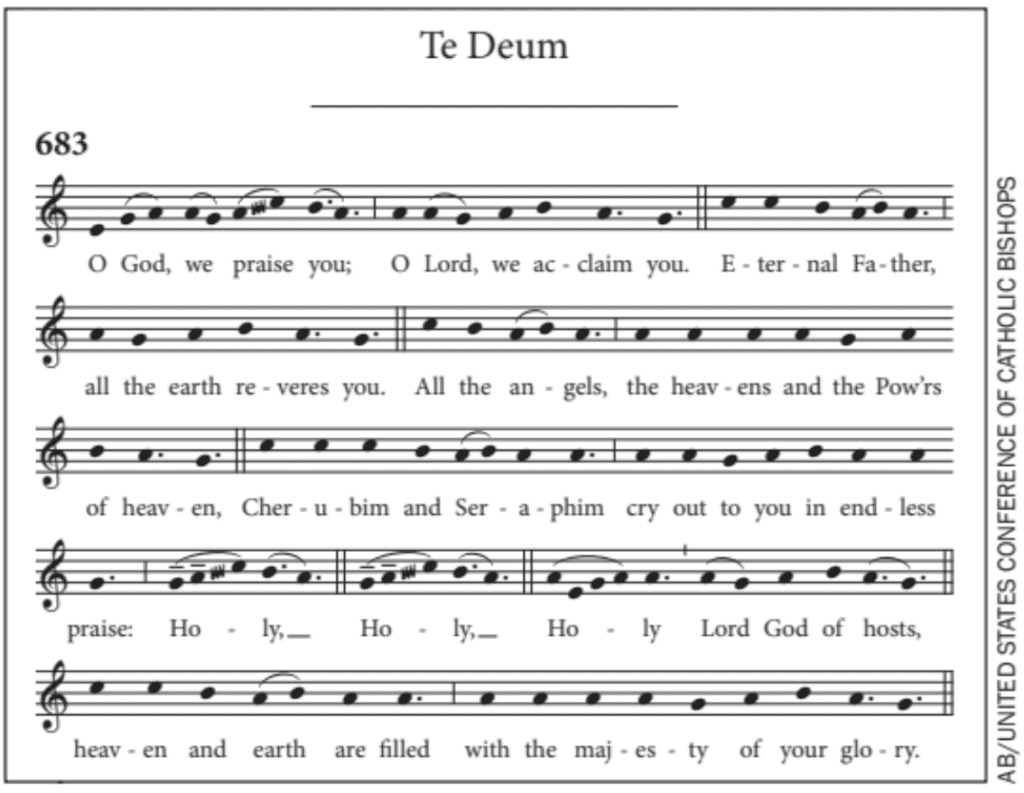
Initially, the possibility of two separate music books was discussed for this project: one with the chant melodies and another with metrical hymns. An international music committee was formed by ICEL and the USCCB. The committee considered the meter and accent placement of the Latin hymn texts with their melodies, worked with the translations, and studied and adapted the melodies for the chant. The book contains 128 distinct plainsong melodies. Additionally, the committee proposed metrical hymn tunes suitable for each of these hymn texts. The music committee selected some 52 simple and familiar metrical tunes for ease of use by the faithful. Some of these tunes may be more familiar to Catholics in Britain than to Catholics in American or Canadian communities, as this was an international effort with chant experts from multiple countries. The result is a beautiful liturgical book of music, with two options for each hymn text: one set to the chant melody and one setting to a metrical hymn on facing pages.
Plainsong Melodies
The ancient and yet ever new Gregorian melodies of the hymns are taken from the Liber Hymnarius, the Latin book of hymns for the Liturgy of the Hours. Some of the Gregorian melodies have been slightly altered with the goal of accommodating the English accent patterns of the hymn texts as they differ from Latin accent placement. In the foreword, we are introduced to the new term “eased plainsong,” describing this light alteration of the chant melody. In fact, 76 of the melodies are “eased,” while the rest of the chant melodies remain unaltered. Notably, the most recognizable chants are intact: the Veni Creator Spiritus and the Vexilla Regis, among others. Tunes that are eased are marked with an asterisk in the index to the hymnal.
More often than the other parts of the office, the hymns bring out the proper theme of individual hours or feasts and incline and draw the spirit to a devout celebration.
One of the beautiful features of this book is the repetition of melodies within a liturgical season or on a particular liturgical day, which provides an aural reminder of the natural rhythm to the cycles of days and seasons of the liturgical year. The foreword to the Liber Hymnarius notes that the hymns highlight a theme or mood for the liturgical day, drawing the faithful into the mystery or season being celebrated. Adam Bartlett, founder of the music publisher Source and Summit, emphasizes that this hymnal is truly an “opportunity for people of the English-speaking world to understand more deeply hymnody in the liturgy.”
The chant notation is presented with stemless round modern notation on the 5-line staff, which provides the greatest accessibility to a wider audience, and in a range suited to congregational singing.
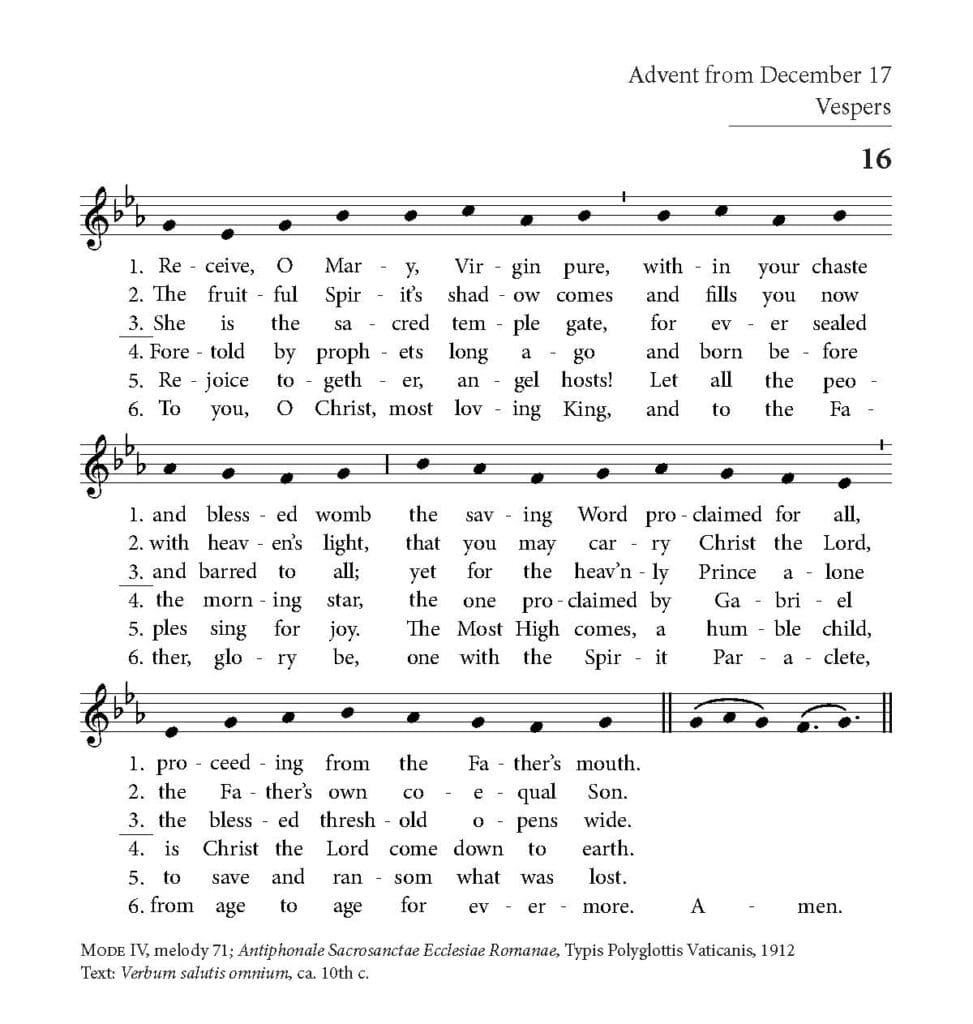
Image Source: AB/United States Conference of Catholic Bishops
For communities already familiar with the Gregorian melodies of the Liturgy of the Hours, they may note these differences in the resetting in English. For those who are interested in the nuances involved in the adaptation of Gregorian chant to the vernacular, one criticism of the new hymnal is that the musical-metrical accent appears to be the priority, rather than the “melodic-verbal synthesis,” a term borrowed from Dom Eugène Cardine. He argues that the melodic accent and the verbal accent should reach their zenith together (see his work, Beginning Studies in Gregorian Chant). One such example in this collection is the hymn Ave Maris Stella—a shift of one note from the first syllable onto the second would have preserved the traditional placement of the word-accents in the Latin and retained its same feel in English. Of course, this is more a matter of differences in approach by chant experts than a criticism of the work as a whole. For, this is the great difficulty in adapting chant into other languages: preserving the melodic-textual integrity of the Gregorian chant in the union of word and melody. As the foreword to the Divine Office Hymnal notes, “the natural accentuation of the text itself expresses the rhythmic character of the chant, a cantillation arising from the text.”
The melodies contained in the Divine Office Hymnal are not definitive settings, but represent a significant start to a recovery of these beautiful melodies of the Church’s continuous musical tradition. These chants are in a certain sense a link connecting Catholics with their own musical patrimony, says ICEL’s Msgr. Wadsworth.
Approved for Liturgical Use
The Divine Office Hymnal contains hymn texts for each of the hours of the liturgical day. Following the General Roman Calendar with celebrations proper to the United States, all of the hymn texts are included for the Proper of Time, followed by the Proper of the Saints, the Commons, the Office of the Dead, and the Te Deum in English. The indices are searchable by composers, authors, and sources, plainsong melodies, metrical tunes, Latin titles, English titles, celebrations, and the Proper of Time. The index of plainsong melodies also indicates the sources of these melodies, almost entirely taken from the Liber Hymnarius.
The study of the hymnody of the Divine Office will also result in a significant scholarly contribution: a forthcoming five-volume commentary on the hymns (both on their Latin texts and the significance highlighted by the English translations) will be published by Catholic University of America Press. This academic commentary will represent the rich research undertaken by ICEL, a work of tremendous value for the promotion and study of the liturgical texts under the guidance of Msgr. Wadsworth.
This is the great difficulty in adapting chant into other languages: preserving the melodic-textual integrity of the Gregorian chant in the union of word and melody.
The hymn texts in the Divine Office Hymnal are approved for liturgical use. As in previous editions of the liturgical chant books, only the texts are given an imprimatur as the songs are not official melodies, meaning the texts could be reset to other hymn tunes. In terms of the copyright permissions, the USCCB has granted limited exclusivity to GIA Publications of Chicago to print the Divine Office Hymnal. ICEL owns the copyright to the liturgical texts in English, and allows printing as directed by the USCCB. For composers eager to set these texts to original melodies, new hymn tunes and compositions can be approved (up to 10 per collection) and published until the new Liturgy of the Hours is printed. For collections reproducing the same melodic/textual combinations, the permissions are more limited. After the second edition of the Liturgy of the Hours has been available for a year, the permissions open more broadly. After five years, the permissions become even more available.
The current projection for a release date of the new Liturgy of the Hours is in 2026. It is estimated that more than half of those who pray the Liturgy of the Hours currently receive it in an electronic format. The USCCB is exploring the possibility of app development so that the faithful can have free access to the prayer of the Church, a substantial step in responding to that encouragement for the faithful to take up this prayer as their own.
Renewal of Musical Prayer
This new liturgical book, published by the U.S. bishops and confirmed by the Holy See, is a liturgical book entirely comprised of music. What an incredible gift to the Church in this day and age! The beautiful hymn texts and the musical inheritance of the Roman Rite will be even more widely available to encourage and enrich liturgical prayer. This hymnal is a significant contribution to the whole of the Church, whether for individual priests praying the Divine Office on their own, those in religious communities and seminaries praying in common, or the faithful in their parishes and the domestic Church.
This new liturgical book, published by the U.S. bishops and confirmed by the Holy See, is a liturgical book entirely comprised of music. What an incredible gift to the Church!
The foreword to the Divine Office Hymnal, which was written by Bishop Steven J. Lopes, Chairman of the USCCB Committee on Divine Worship, concludes with this hopeful outlook: “Almost sixty years ago, the Fathers of the Second Vatican Council expressed an earnest desire that the entire Church—clergy, religious, and laity—join in offering praise to God in the Divine Office. The Council encouraged prayer in common whenever possible, and prayer that is carried out with understanding as well as devotion. We hope that this volume will contribute to a renewal in this most beautiful and powerful prayer of the Church.”
See giamusic.com/store/the-divine-office-hymnal to order.
Alexis Kazimira Kutarna is a PhD Candidate in Liturgical Studies with a concentration in Church Music at the University of Vienna, and recipient of the Ratzinger Foundation Grant for doctoral studies. She earned a Master of Arts in Liturgy at The Liturgical Institute at the University of St. Mary of the Lake/Mundelein Seminary. She holds a master’s and bachelor’s degree in music, as well as a Performer’s Certificate. Alexis teaches courses on the liturgy and liturgical music at the University of St. Thomas in Houston, and directs the St. Basil School of Gregorian Chant. She was the founding director of sacred music at Cathedral High School in Houston, and now serves as the school principal. Most important is her vocation as wife and mother to two daughters.


